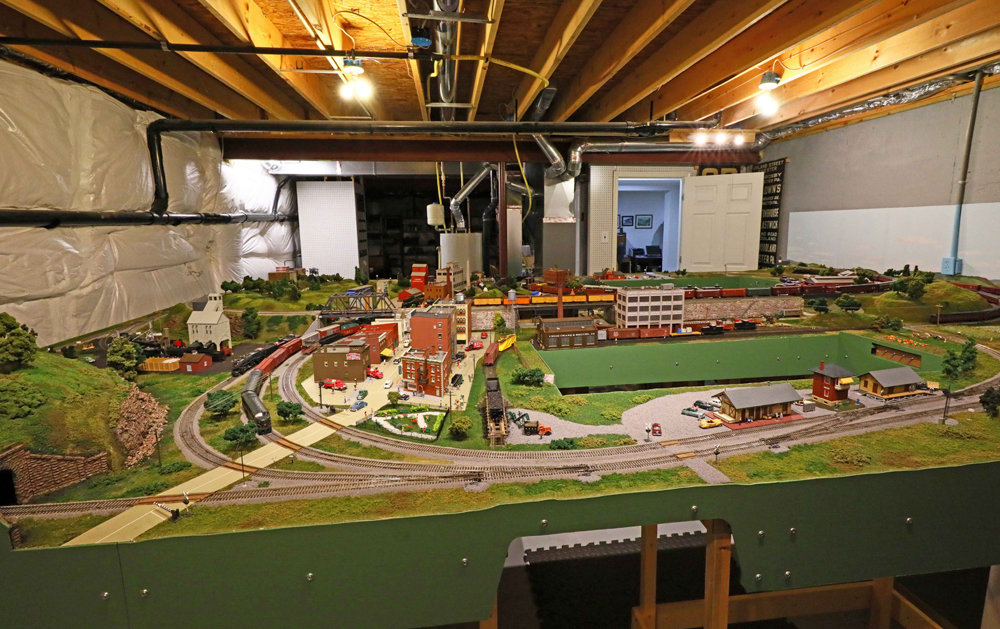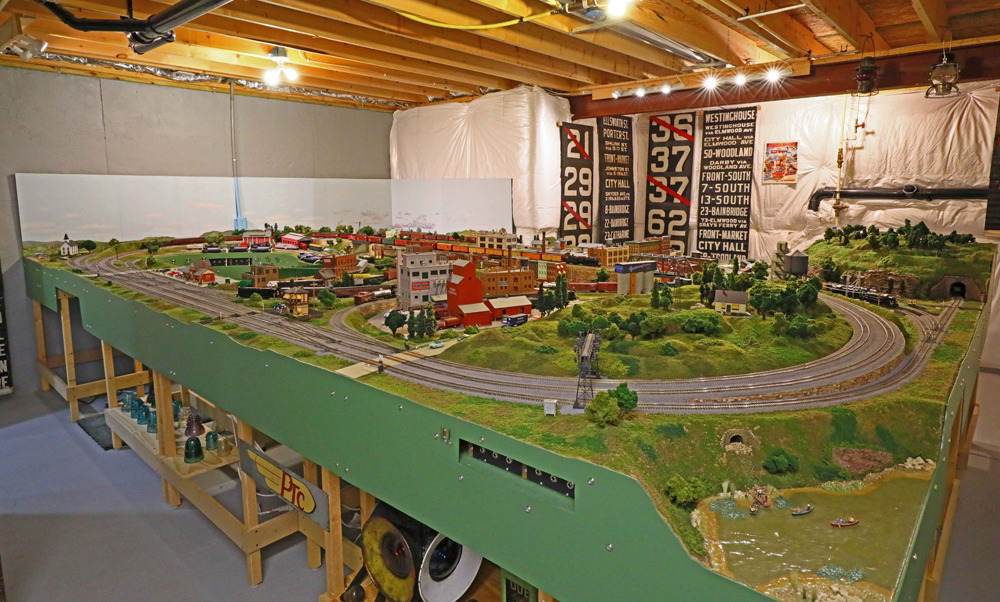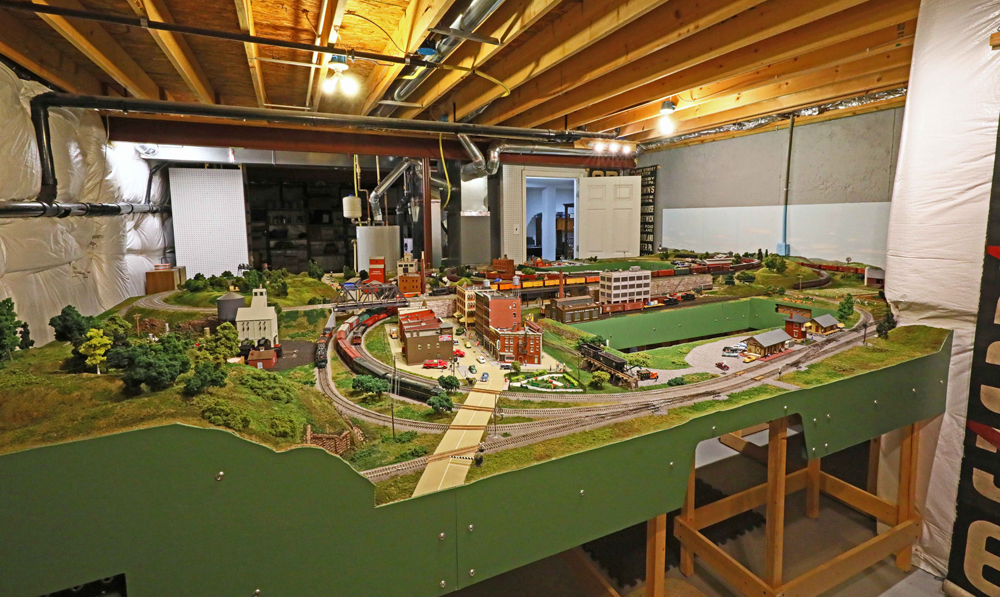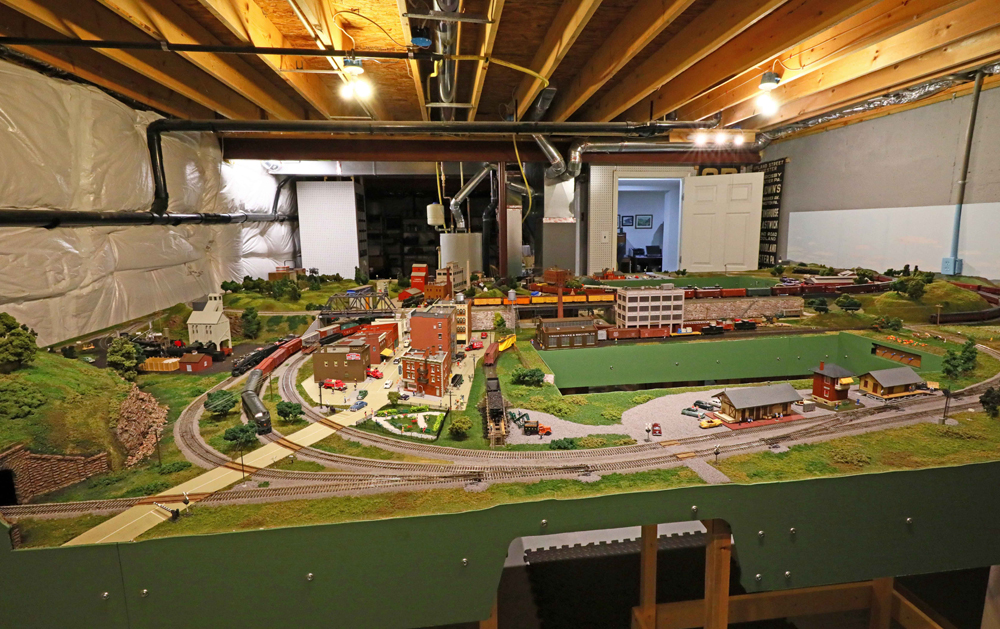Built by Others is an article series showcasing layouts constructed by modelers using plans and projects from the pages of Model Railroader and its associated products. The New York, New Haven & Hartford RR originally appeared in the pages of Model Railroader in August of 2004. Fred Ciocciola adjusted this trackplan to fit the space he had available, and to satisfy his operational goals.
Built by Others: Fred Ciocciola’s PRR-inspired layout
Anyone who has built a model railroad layout knows that it is no small undertaking. Considering the effort and labor hours that go into its creation, the decision to begin work on a new model railroad layout is not one taken lightly. In the summer of 2008, after moving to a new house, I made that decision, and soon after, work began on a new layout. My previous layout was point-to-point and featured a reverse loop at each end, with the loops arranged on top of each other. Since I couldn’t have the trains run unattended, I eliminated the loops. When looking for a new track plan for inspiration, I wanted something with multiple loops so that I could run multiple trains simultaneously. I found one in the New York, New Haven & Hartford RR trackplan, which appeared in the August 2004 issue of Model Railroader. I modified this design to fit my space, with a goal of being able to have five trains running at once. To enable this, I connected the passing siding at the top of the original diagram to the reverse loop on the left side, and connected the two sidings on the lower right.
Construction began on the new layout in May of 2009, and was completed in July of 2013. I used Woodland Scenics Mod-U-Rail Stands for the base, topped with half inch plywood. I laid out the track plan on the plywood and then installed Woodland Scenics Subterrain risers and foam roadbed to support the PECO code 83 track and switches. I hand laid the track on my previous layout, but commercially available track had improved so much since then that I decided not to hand lay again. Everything was glued together with Woodland Scenics Foam Tack Glue and low-temperature hot glue. Pink insulation foam was used for the terrain, mostly 1 ½“ in thickness and covered with plaster-impregnated gauze. After a brown ground color paint was applied, I installed Woodland Scenics Ground Foam Terrain. Many of the trees were salvaged from my old layout, but I have added many more, some from kits and some ready built.
Most of the wiring is on top of the plywood base, save for wiring which was done after the layout was completed. A large amount of the wire used on this layout was recycled from a previous layout. Everything was wired for DC block operation. Initially, I used GML Enterprises throttles, one for each of the five loops and one for the industrial area. These worked quite well, but after purchasing several DCC engines, I converted to MRC Tech 6 power packs, which allows for smoother operation of the DCC engines.
My layout is set in 1955, allowing me to use both steam and early diesel engines. My roster of locomotives, all Pennsylvania except as noted, is comprised of: F3’s, E7’s, two GP7s, an RS1, a Pennsylvania-Reading Seashore Lines Baldwin DRS 4-4-1500, Erie-builts, an RS3, two 44 tonners, an S1, an M1a, a K4, an E6, an H10, a Reading 0-4-0, a Union Pacific Big Boy (as it appears today), and an Amtrak ASC-64. The latter two don’t fit my time period, but were presents given to me on my 80th birthday. Sometimes, you have to be flexible, and the Big Boy did operate in 1955.
Accordingly, my buildings are constructed from kits and modeled to fit my era. Many feature added details. I decided to keep the colors mostly muted, with colors which fit my memory of the period. All of the buildings are lighted.
Most of the vehicles are accurate to the time period as well, and are sourced from various manufacturers. Many are from the 1950’s. Some are from the 1940’s and a few are even from the 1930’s, since they would still have been around in 1955. All were factory assembled, except a sedan and a mail truck which were built from kits.
Except for operating the trains for visiting friends and my grandchildren, most of what I do now is adding details, such as wind mills, roof details, window awnings, animals, bushes, flowers, and figures.
Finding the New York, New Haven & Hartford layout in the pages of Model Railroader allowed me to have the layout that I wanted, giving me many hours of satisfying construction and running time, and I have received many compliments from family members and friends.

















